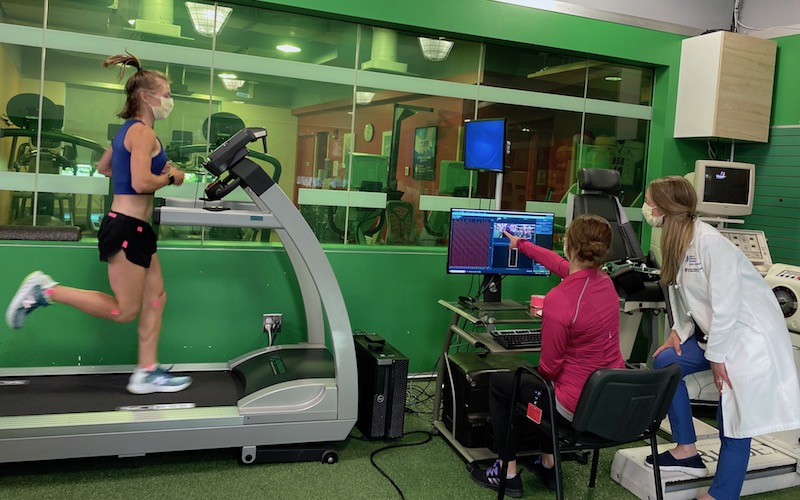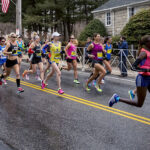Gait analysis gives runners a window into their form

Why can some runners compete in marathon after marathon while others get injured? The answer often lies in the runner’s form.
According to Dr. Kristin Whitney, co-director of the Injured Runners Clinic at Boston Children’s Hospital, many runners aren’t aware of subtleties like how hard their feet hit the ground or the angle of their hips, knees, and ankles when they run. But over hundreds of thousands of steps, little things like this can add up. Gait analysis can help get to the bottom of how an athlete’s form can lead to injury, or even prevent injuries before they happen.
“Gait analysis is a real-time way of evaluating a runner’s movement patterns,” explains Dr. Whitney, a physician in the Sports Medicine Division. “Once we have a clear picture of their running form, we can work with them on small changes that can help them avoid injury and improve their performance.”
How gait analysis works
The concept is both simple and high tech. An athlete runs on a force plate treadmill specially designed to measure the force and angle of their feet as they hit the ground and as they push off. Meanwhile, video cameras record them running from the side and the back.
After the recorded run, which typically lasts about 5 to 10 minutes, the athlete reviews the findings from their running analysis with a multidisciplinary team. The team typically includes an injury prevention specialist and sports medicine physician.
By slowing down or freezing the video, the athlete and their team can see things like whether their feet land in front of their body (a sign of over striding) or directly under their knee and hip (ideal). They also look at data generated by the force plate treadmill. It turns out that the bottom of a runner’s feet can tell volumes about their form, such as the angle of their feet as they land and the amount of impact their feet absorb with every step.
Once the runner has a detailed breakdown of their running form, athletic trainers from The Micheli Center for Sports Injury Prevention help put things back together, addressing areas where the athlete could improve. The regimen may include strength training, addressing flexibility and range-of-motion deficits, and/or running drills to modify the athlete’s running stride patterns.
Questions gait analysis can answer about a runner’s form
How are the athlete’s feet hitting the ground?
Do their feet and ankles land directly below their knees?
Is the athlete driving forward with their knees?
Is the athlete using their hips effectively to push themselves forward?
Does one hip drop slightly when the foot leaves the ground?
Is the athlete running upright, or do they lean forward slightly?
Not just for runners
Gait analysis focuses on running, but many different athletes can benefit. “I would definitely recommend gait analysis for any athlete involved in field sports who has an overuse injury,” says Dr. Whitney. “It’s an opportunity to make small adjustments that can make huge differences in their performance and health.”
Learn more about the Injured Runners Clinic.
Related Posts :
-

What running mistakes lead to injury?
Running outside is a great opportunity to get some fresh air and, because it requires so little equipment, may be ...
-

Athletes and fatigue: Why am I so tired?
Working out can boost physical and mental energy. Yet sometimes, athletes feel more fatigued than energized. "Feeling tired after a ...
-

Nurturing strength: Tips for parents of female athletes
The drive to succeed can push female athletes to excel at any cost. Female athlete specialist, Dr. Bridget Quinn, talks ...
-

Fuel to be faster: Studying the effects of low energy availability at the Boston Marathon
Like many sports medicine specialists, Kristin Whitney, MD, MA, suspected that many of the issues she treats in runners — bone ...





